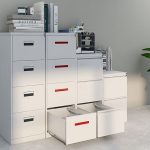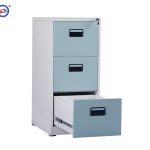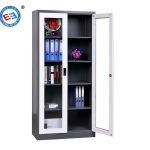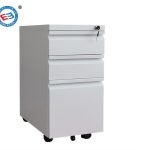A cluttered workspace can drain productivity and create unnecessary stress. Enter the drawer file cabinet—a timeless organizational tool that combines practicality with elegance. Whether corporate office or home workspace, this guide will show you how to maximize its potential.
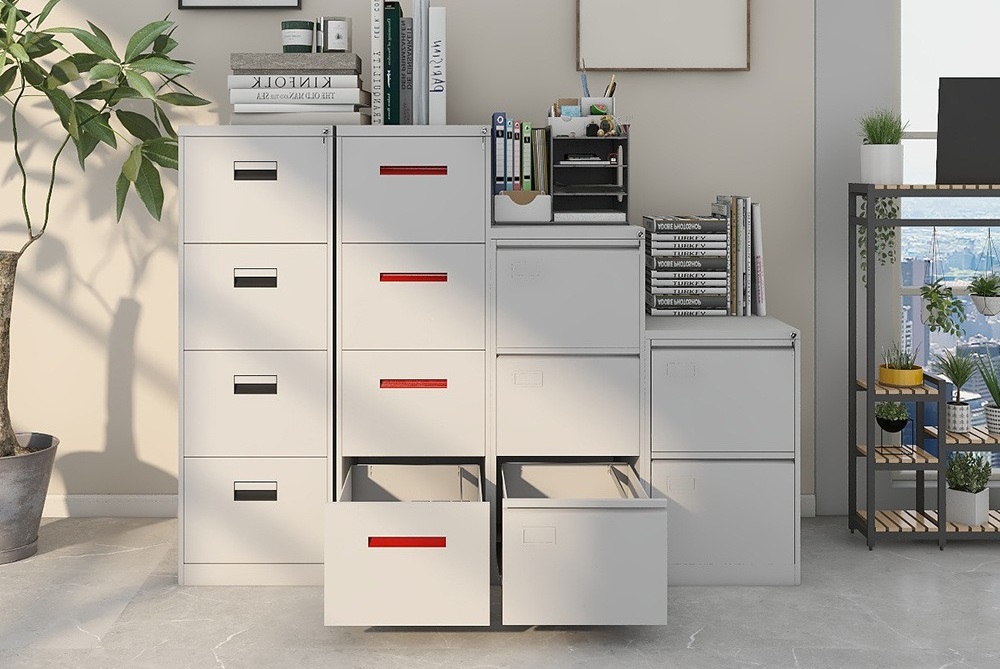
Why Choose a Drawer File Cabinet?
Compact Storage for Small and Large Offices
Drawer file cabinets are designed to fit seamlessly into any office layout. Their vertical design saves floor space, making them ideal for cramped cubicles or expansive corner offices. With options ranging from 2-drawer to 5-drawer units, you can scale storage to match your needs.
Durable Materials for Long-Term Use
Invest in cabinets made from heavy-duty steel or solid wood to ensure longevity. Steel cabinets resist dents and scratches, while wooden options add a classic, professional aesthetic. Both materials withstand daily wear and tear, protecting your documents for years.
Security Features for Sensitive Documents
Locking mechanisms, such as built-in key locks or combination systems, safeguard confidential files like contracts, financial records, or client data. For maximum security, opt for cabinets with reinforced steel frames and tamper-resistant drawers.
Selecting the Perfect Drawer File Cabinet
Number of Drawers to Match Your Needs
- 2-3 drawers: Perfect for home offices or minimalists.
- 4-5 drawers: Ideal for businesses with high-volume filing.
- Lateral vs. vertical: Lateral cabinets offer wider drawers for oversized files, while vertical units save space in tight areas.
Material Options: Steel, Wood, and More
- Steel: Budget-friendly, fire-resistant, and modern.
- Wood: Adds warmth and s uits traditional decor.
- Laminate/Composite: Lightweight and affordable for temporary setups.
Style and Design to Complement Your Office
Choose finishes that align with your office aesthetic—matte black for a sleek look, oak veneer for rustic charm, or white laminate for a minimalist vibe. Consider mobile cabinets with casters for flexible rearranging.
Organizing Your Drawer File Cabinet Effectively
Categorizing Files for Easy Access
Group documents by purpose:
- Client files (A-Z)
- Financial records (by year or quarter)
- Project folders (by deadline or team)
Labeling Drawers and Folders
Use a label maker or sticky tabs to mark drawers (e.g., “Invoices Q3”) and individual folders. Color-coding adds a visual cue for faster retrieval.
Using Dividers and Organizers for Small Items
Keep paperclips, stamps, and USB drives tidy with adjustable dividers or small trays. Assign a dedicated drawer for office supplies to avoid clutter.


Maximizing Space in Your Drawer File Cabinet
Utilizing Vertical Space with Hanging Folders
Hanging folders with labeled tabs let you stack files vertically, doubling your storage capacity. Pair them with manila folders for subcategories.
Storing Frequently Used Items Strategically
Place everyday items (pens, notepads) in the top drawer for easy access. Reserve lower drawers for archived files or seasonal documents.
Rotating and Purging Files Regularly
Schedule quarterly cleanouts to archive outdated files or shred unnecessary ones. Follow the “one in, one out” rule to prevent overflow.
Maintaining a Clutter-Free Workspace
Establishing a Filing System
Adopt a consistent method:
- Alphabetical for client names.
- Chronological for time-sensitive records.
- Project-based for ongoing tasks.
Scheduling Regular Clean-Outs
Block calendar time monthly to reorganize drawers. Digitize rarely used files to free up physical space.
Avoiding Overloading Drawers
Resist the urge to overstuff! Overloaded drawers strain hinges and make files harder to find. If a drawer is full, it’s time to purge or expand storage.
Final Thoughts
A drawer file cabinet isn’t just furniture—it’s a productivity powerhouse. By selecting the right model, organizing thoughtfully, and maintaining your system, you’ll transform chaos into order. Ready to reclaim your desk? Your clutter-free future starts with a single drawer!


